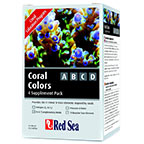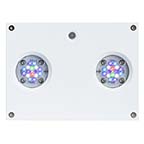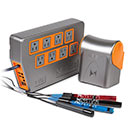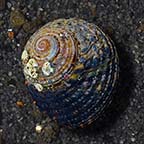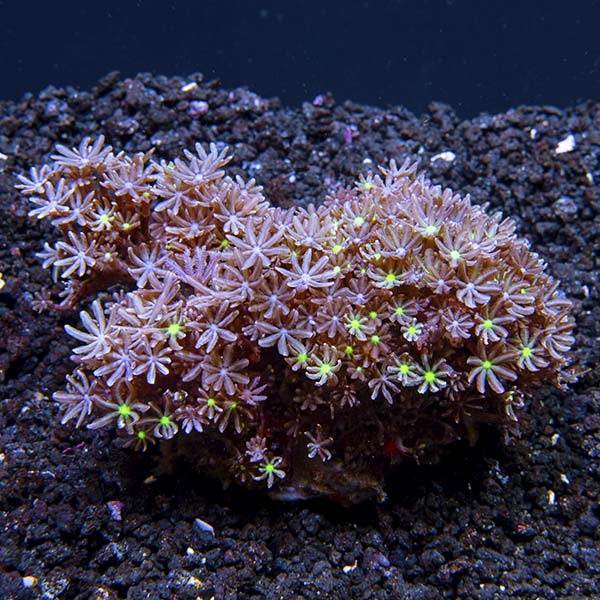

Additional locales and sizes may be available!
Additional locales and sizes may be available! Email me when availableQuick Stats
What do these Quick Stats mean? Click here for more information
What do these Quick Stats mean? Click here for more information
Overview
The Jasmine Polyps are also commonly referred to as Clove Polyps, Eight Tentacle Polyps, or Encrusting Polyps. They are brown, tan, pink, green, or white in color and their polyps have the distinctive eight-leaved tentacles associated with all the members of this family. They are colonial animals with several individual polyps attached to a single piece of live rock and are often stung and damaged by other aggressive corals. Therefore, they need adequate space between themselves and other corals.
Jasmine Polyp rocks are easy to maintain and require moderate lighting combined with moderate water movement. They require the addition of iodine and other trace elements to the water. They will grow rapidly in the established reef aquarium by encrusting over adjacent rock work or even other corals.
The symbiotic algae zooxanthellae hosted within their bodies is responsible for providing the majority of their nutritional requirements via the algae's light drive process of photosynthesis. They also benefit from weekly feedings of micro-plankton or foods designed for filter feeding invertebrates.
Approximate Purchase Size: 3/4" to 1-1/2"





